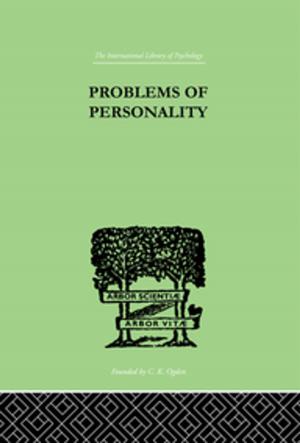Sex and Friendship in Baboons
Nonfiction, Science & Nature, Science, Biological Sciences, Zoology, Social & Cultural Studies, Social Science, Anthropology| Author: | Barbara B. Smuts | ISBN: | 9781351491280 |
| Publisher: | Taylor and Francis | Publication: | September 29, 2017 |
| Imprint: | Routledge | Language: | English |
| Author: | Barbara B. Smuts |
| ISBN: | 9781351491280 |
| Publisher: | Taylor and Francis |
| Publication: | September 29, 2017 |
| Imprint: | Routledge |
| Language: | English |
Those who have been privileged to watch baboons long enough to know them as individuals and who have learned to interpret some of their more subtle interactions will attest that the rapid flow of baboon behavior can at times be overwhelming. In fact, some of the most sophisticated and influential observation methods for sampling vertebrate social behavior grew out of baboon studies, invented by scientists who were trying to cope with the intricacies of baboon behavior. Barbara Smuts' eloquent study of baboons reveals a new depth to their behavior and extends the theories needed to account for it.While adhering to the most scrupulous methodological strictures, the author maintains an open research strategy--respecting her subjects by approaching them with the open mind of an ethnographer and immersing herself in the complexities of baboon social life before formulating her research design, allowing her to detect and document a new level of subtlety in their behavior. At the Gilgil site, described in this book, she could stroll and sit within a few feet of her subjects. By maintaining such proximity she was able to watch and listen to intimate exchanges within the troop; she was able, in other words, to shift the baboons well along the continuum from ""subject"" to ""informant."" By doing so she has illuminated new networks of special relationships in baboons. This empirical contribution accompanies theoretical insights that not only help to explain many of the inconsistencies of previous studies but also provide the foundation for a whole new dimension in the study of primate behavior: analysis oft he dynamics of long-term, intimate relationships and their evolutionary significance.At every stage of research human observers have underestimated the baboon. These intelligent, curious, emotional, and long-lived creatures are capable of employing stratagems and forming relationships that are not easily detected by traditional research methods. In the process
Those who have been privileged to watch baboons long enough to know them as individuals and who have learned to interpret some of their more subtle interactions will attest that the rapid flow of baboon behavior can at times be overwhelming. In fact, some of the most sophisticated and influential observation methods for sampling vertebrate social behavior grew out of baboon studies, invented by scientists who were trying to cope with the intricacies of baboon behavior. Barbara Smuts' eloquent study of baboons reveals a new depth to their behavior and extends the theories needed to account for it.While adhering to the most scrupulous methodological strictures, the author maintains an open research strategy--respecting her subjects by approaching them with the open mind of an ethnographer and immersing herself in the complexities of baboon social life before formulating her research design, allowing her to detect and document a new level of subtlety in their behavior. At the Gilgil site, described in this book, she could stroll and sit within a few feet of her subjects. By maintaining such proximity she was able to watch and listen to intimate exchanges within the troop; she was able, in other words, to shift the baboons well along the continuum from ""subject"" to ""informant."" By doing so she has illuminated new networks of special relationships in baboons. This empirical contribution accompanies theoretical insights that not only help to explain many of the inconsistencies of previous studies but also provide the foundation for a whole new dimension in the study of primate behavior: analysis oft he dynamics of long-term, intimate relationships and their evolutionary significance.At every stage of research human observers have underestimated the baboon. These intelligent, curious, emotional, and long-lived creatures are capable of employing stratagems and forming relationships that are not easily detected by traditional research methods. In the process















